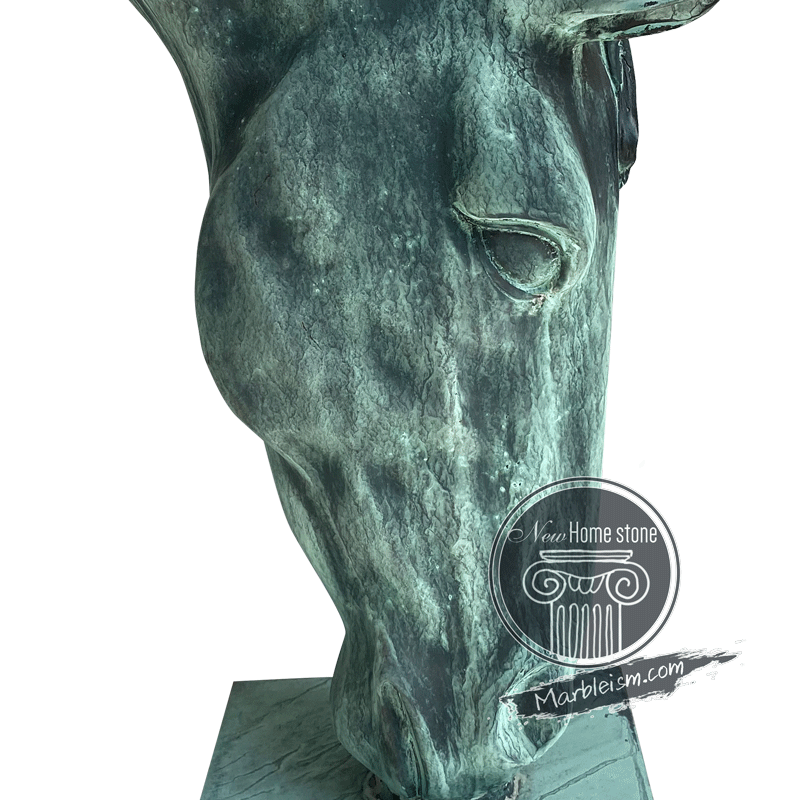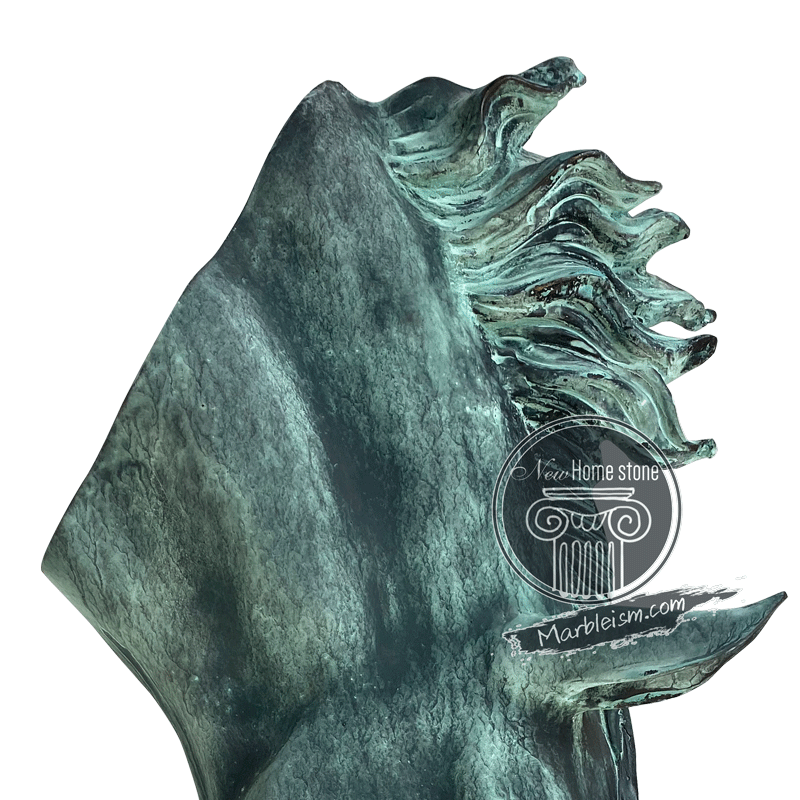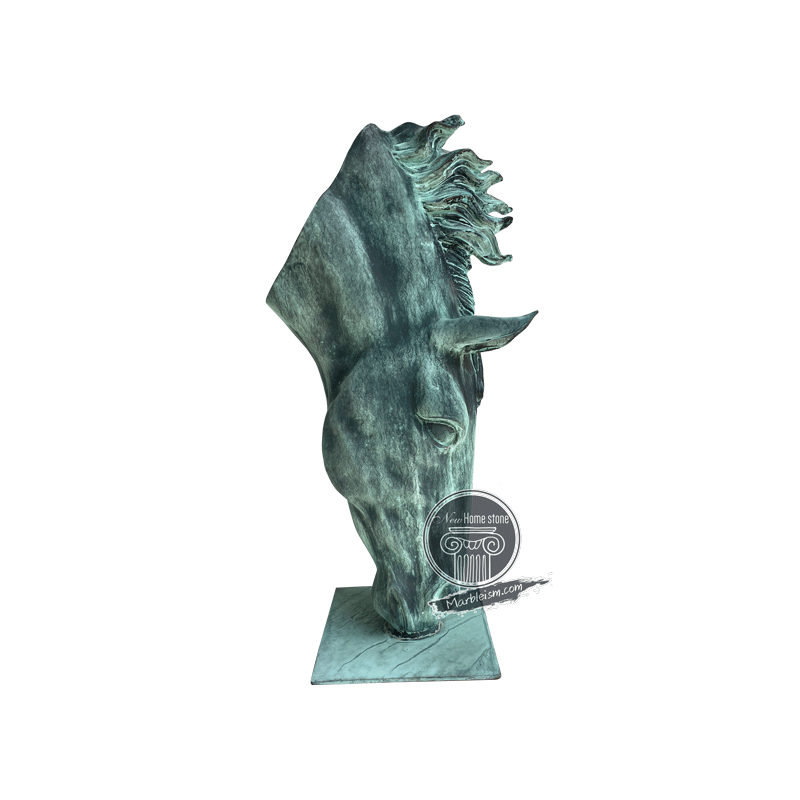Large garden bronze statue of horse head

The brilliance of this bronze statue allows the isolated head of this grazing bronze horse to stand in convincingly for the rest of the animal’s body: there is no doubt as to the rest of the scene, for anyone viewing it. The work is a synecdoche, using a small part to fully express the existence of the whole, which is a very common technique in all artistic mediums… for creative artists skilled enough to use them properly, at least! Just from the bronze statue horse head, its angle, its position to the ground, and the subtle expression on the animal’s face, we have a vision of the full view of the bronze horse grazing in a field… and both the weight and beauty of the bronze statue horse’s life stretching out behind them. In Latin, the concept of pars pro toto, “a part for the whole,” refers to this kind of shorthand symbolism which highlights an important element of a subject and implies the rest: typically, the part being referenced—in this case, the bronze horse’s head—is chosen carefully to set the tone, meaning, or significance of the rest of the subject, and the omission of the other parts can also carry its own important deeper meaning.
The bronze horse’s eyes combine a deep kind of somber sadness with a more hopeful sense of power and dignity: the ideal mix of traits for a heroic figure. The nose acts as an anchor, with the invisible weight of the bronze metal allowing the sculpture to tilt in place without toppling, giving the illusion of the head peering in from the rest of the body. The bronze horse head statue’s powerful muscles, densely packed around its neck and jaw, belie the gentle, almost domestic feel of the scene: again, that dichotomy of opposites, of beauty and power, or grace and strength. Adding to this balance of opposites now is known and unknown: we see the horse’s head, and see him grazing. We also see the expression on his face, even the way his mane falls about his neck as he leans down to the grass. But what we don’t see is the rest of the world. The bronze horse statue’s entire life, his home, his environment, are all hidden to us, yet we instantly fill in these details without thinking twice about it. Every time someone new sees this sculpture for the first time, a new world is created: the art changes for everyone. That is the power and allure of synecdoche.

